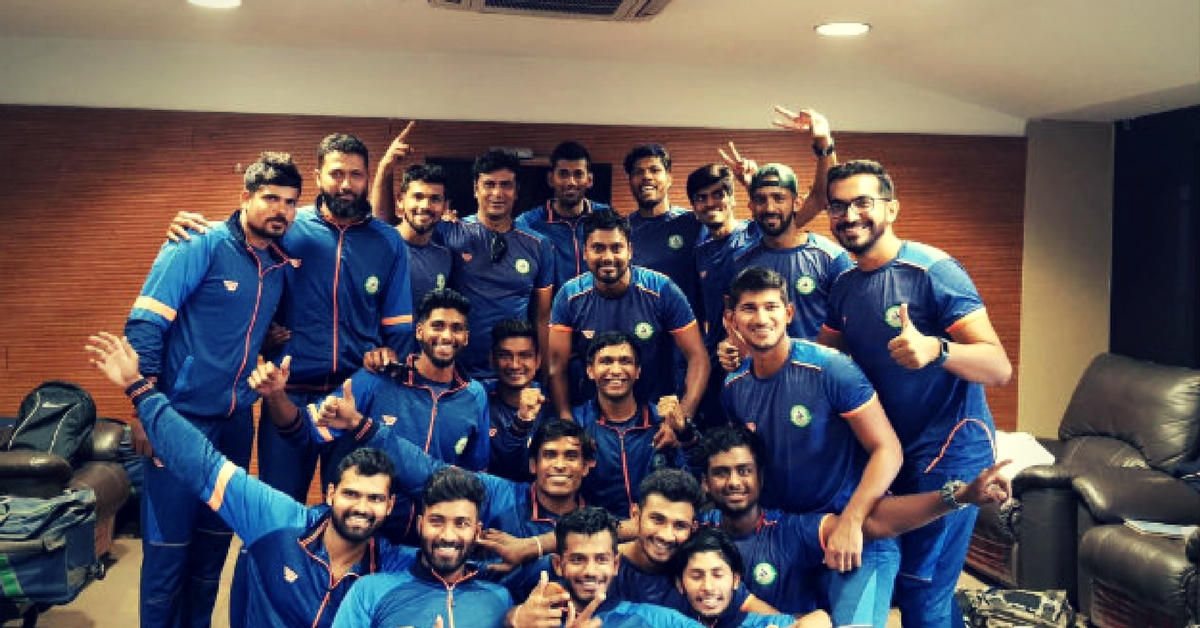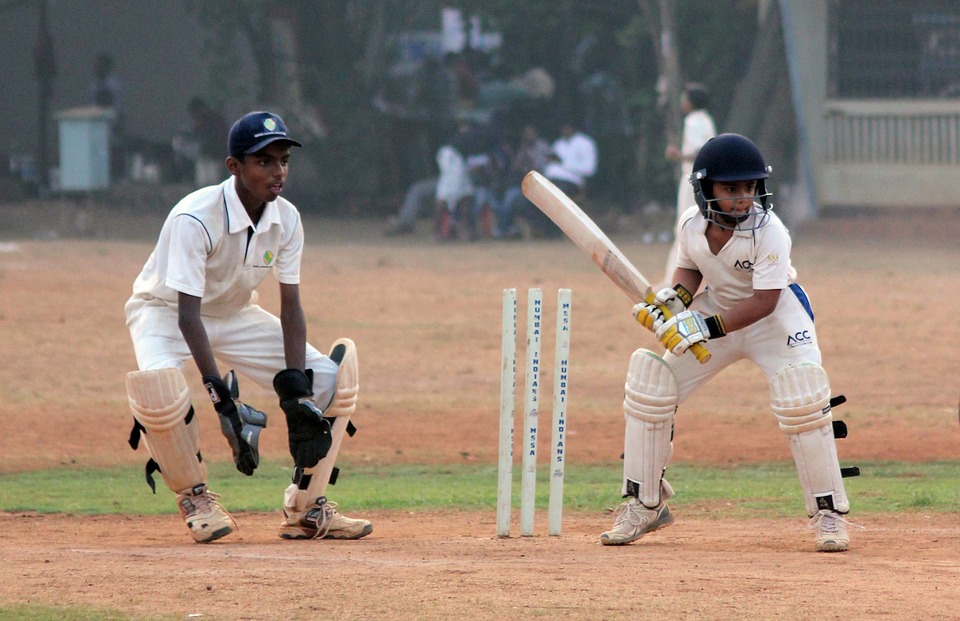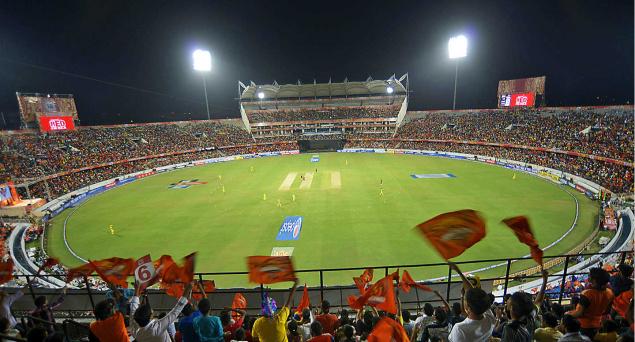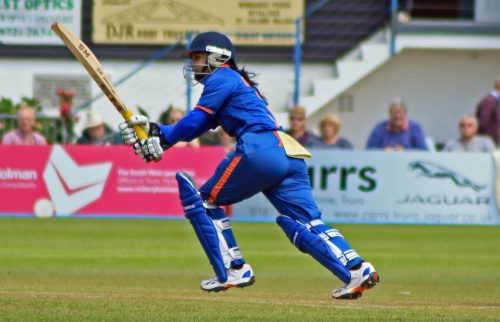Vidarbha’s Maiden Ranji Win Heralds New Innings for Cricket in the Hinterland
On New Year's Day, Vidarbha thumped traditional giants Delhi by nine wickets.

On New Year’s Day, an unassuming Vidarbha team won the Ranji Trophy, India’s most prestigious domestic cricket competition, for the very first time. Led by veteran coach Chandrakant Pandit and captain Faiz Fazal, the Vidarbha side thumped traditional giants, Delhi, by nine wickets.
This team had all the necessary ingredients for success. A solid crop of young and experienced cricketers ably backed by a meticulous and innovative coaching staff and a dedicated state cricket association gave the team the necessary platform to finally step into the national limelight.
However, as any successful team in professional sports will tell you, it takes more than just a squad of players and their coaching staff to win major tournaments. This is more so in the case of the Vidarbha side, which would earlier hang around the lower rungs of domestic cricket.
What any successful team needs is a thriving ecosystem that goes all the way down to the grassroots, fostering a culture of meticulous work, detail, and a competitive spirit.
Vidarbha’s success is just a manifestation of all the groundwork that the Vidarbha Cricket Association has put in through the course of this decade, which has percolated down to the grassroots.

To develop young talent from not only Nagpur but the interiors in the districts and rural areas, the VCA set up its residential cricket academy in June 2009 with all the necessary facilities. This endeavour aimed to scout for talent from these regions, and with the attraction of a residential academy, the VCA was successful in bringing talented youngsters to Nagpur.
The VCA would send out its team of selectors to the districts to scout for talent in open selection sessions, instead of the age-old practice of asking the districts to send players over. Developing feeder systems for young talent is critical, and the VCA has gone out to conduct school-level cricket clinics and tournaments in the districts and rural areas.
It’s no surprise that the current Vidarbha side has accumulated a crop of talented players who have honed their skills at the academy. Take the example of Rajneesh Gurbani, the side’s leading fast bowler who finished the season with 39 wickets, the second highest wicket-taker in the tournament.
This 24-year-old fast bowler with a civil engineering degree honed his skills at the VCA’s academy from his teens. One can even look at 19-year-old seamer Aditya Thakare from Akola, who was drafted into the side for the final.
Something similar was afoot in Karnataka during the early 2000s, when cricket at the junior levels was struggling to produce the next crop of talented players after the emergence of Rahul Dravid, Anil Kumble and Javagal Srinath.
The Karnataka State Cricket Association (KSCA) decided to tackle the issue by setting up coaching camps all over the state with the best players invited to Bangalore in the summer for intense coaching sessions and matches. This was done under the guidance of former England fast bowling great Frank Tyson, ex-India seamer Balwinder Sandhu, with the legendary Gundappa Vishwanath at the helm of the academy’s operations.
The late Tyson established a coaching blueprint that was followed all over the state, from training regimens to setting up strict timetables that would chart the progress of a prospective talent using sports science.
In its bid to ramp up youth cricket, the KSCA set up cricket training facilities across the state to ensure that kids did not have to travel long distances for practice, besides hosting regular school and district-level matches.

Seamer Vinay Kumar, the son of a rickshaw driver from Davangere, was one of the first significant finds to come out of this system. Robin Uthappa, Sreenath Arvind, KP Appanna, and CM Gautham, among others, were also some of the success stories, and a couple of years down the line, the system produced fantastic batting talents like KL Rahul, Manish Pandey and Karun Nair.
This methodology had a real impact on the Board for the Control of Cricket in India (BCCI), which saw the KSCA’s blueprint and set up the famed National Cricket Academy in Bangalore. Of course, Karnataka also went on to win consecutive Ranji Trophy tournaments (2013-14 and 2014-15).
Read also: 6 Memorable Moments in Indian Sports This Year That Captured Hearts and Minds
The emergence of talented cricketers from outside of traditional strongholds like Delhi, Chennai and Mumbai, has been well documented. With the revenue that the BCCI has generated, especially after the emergence of the Indian Premier League, money has begun flow into the coffers of state associations. Talented young players can now hope to have a lucrative career without necessarily fearing the prospect of not making to the Indian national team.
More importantly, the IPL offers these young players the necessary exposure to top class international cricketers, coaches, physios, sports science and the latest technology has to offer. This has ramped up their development, although cricketers on the domestic scene without IPL have complained of the wage disparity. However, some other things could be better.

With 24 international-quality cricket grounds, what Indian cricket needs more of today is the necessary infrastructure in districts and small towns so that talented kids from these parts can practice around the year. Collaborations with schools and universities, which are a budding ground for young talent, and equip them with necessary facilities—nets, rollers, practice wickets, changing room for players and umpires, among others.
Like the 40-odd cricket training centres set up by the KSCA during Anil Kumble’s tenure as president, other state associations can set up feeder academies with a dedicated coaching staff so that children have an opportunity to play through the year, which is an essential requirement for the development of quality players.
“The success of any cricket administration, I’m told, depends on how many kids you reach. Not via clubs or private academies, where costs are high, and interests can be politically conflicted,” writes Sharda Ugra, senior editor at ESPN Cricinfo, in a recent column. “Schools and college cricket cuts through a wider swathe makes use of grounds already available, keeps kids busy playing matches around the year.”
Another potential area for the BCCI and respective state associations to consider is to begin a nationwide push to inspire more women to get into the game. For starters, get more women to participate. Again, use the avenues offered by schools and universities to get them involved, and set up active academies for them. From there, state associations could conduct tournaments across various age groups.
Read also: 6 Times in 2017 When Indian Women Cricket Team Ruled the Field
“Need a template? Ask the Andhra Cricket Association or the Himachal Pradesh Cricket Associations, who have set up academies for women and have active programmes for them,” Ugra goes on to write.

These are just some of the suggestions on offer, which require deeper analysis. The BCCI and state associations need to get their act together and ensure greater transparency in how they function. Third party audits and greater oversight of these bodies, not necessarily by the government, and monetary incentives to state associations that do better in developing the game at the grassroots will allow the money to percolate down. However, detailing the structural reforms in how the game is run will require more space than an article.
As Vidarbha has shown us if you invest in the future with a dedicated plan, greater success and glory is only around the corner. With Gujarat winning the Ranji Trophy last year, there are real signs that cricket has moved from its traditional power centres, and other state associations and the BCCI must cash in to elevate India to further glory.
If you found our stories insightful, informative, or even just enjoyable, we invite you to consider making a voluntary payment to support the work we do at The Better India. Your contribution helps us continue producing quality content that educates, inspires, and drives positive change.
Choose one of the payment options below for your contribution-
By paying for the stories you value, you directly contribute to sustaining our efforts focused on making a difference in the world. Together, let’s ensure that impactful stories continue to be told and shared, enriching lives and communities alike.
Thank you for your support. Here are some frequently asked questions you might find helpful to know why you are contributing?


This story made me
-
97
-
121
-
89
-
167













